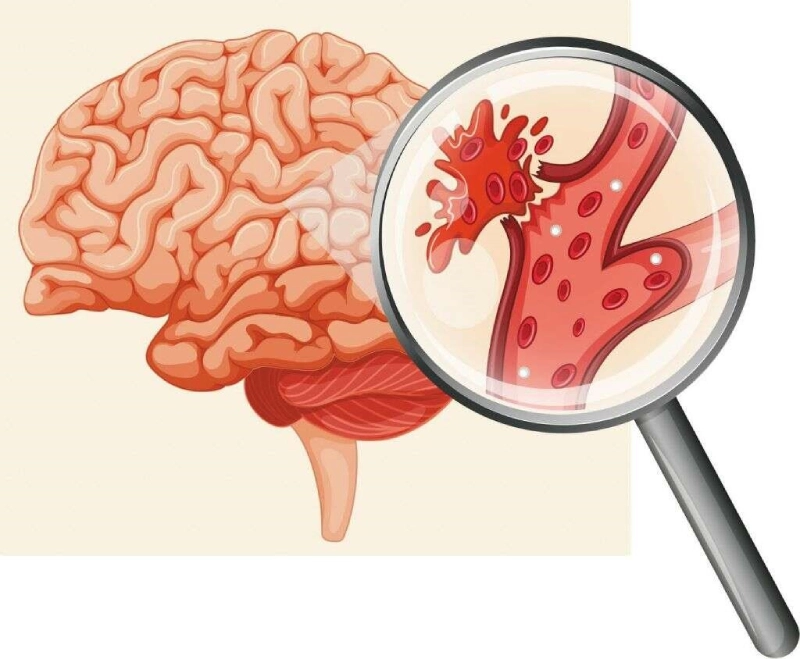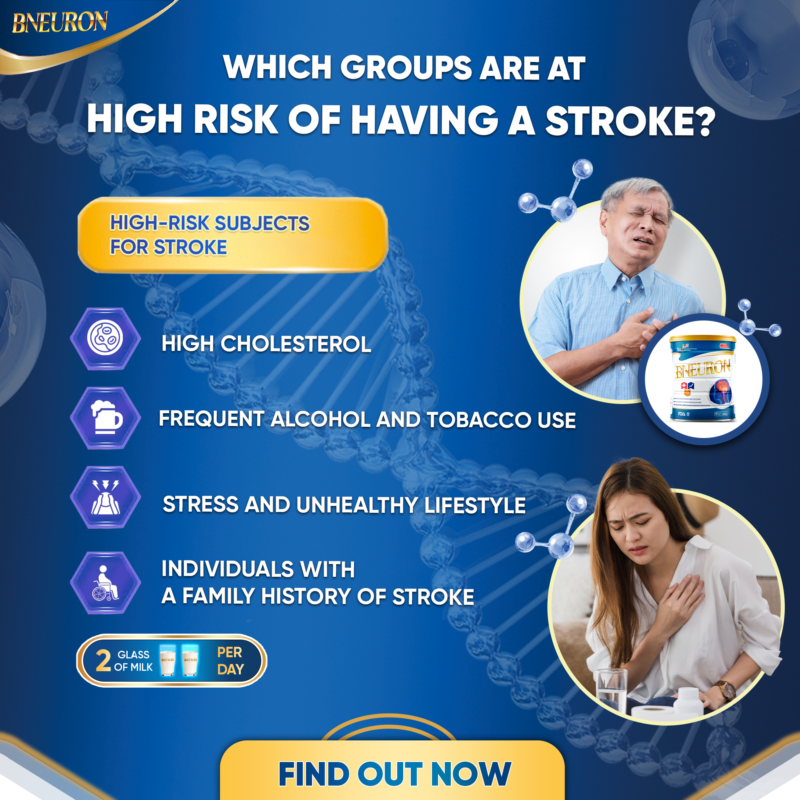Understanding who is at high risk for stroke is crucial for prevention and early intervention. While certain factors like age and genetics are fixed, others related to lifestyle and health conditions can be managed. In this discussion, we’ll identify key groups at heightened risk and the importance of awareness and proactive health measures in reducing the incidence of stroke.
Factors that lead to stroke can be categorized into two groups: immutable factors that cannot be modified and flexible factors that can be managed or improved. To effectively prevent and cope with the risk of stroke, regular health check-ups and monitoring for warning signs are extremely crucial, aiding in the early identification of risk factors and the implementation of timely interventions.
What types of stroke are there?

The severe health condition known as cerebrovascular accident or simply stroke is becoming increasingly common and shows an upward trend. It is one of the leading causes of death and disability worldwide, ranking third after heart issues and cancer, and is also the leading cause of severe disability in adults.
There are two main classifications of stroke: ischemic, which includes blockages in the cerebral vessels, accounting for about 85% of all cases, and hemorrhagic, where there is bleeding into or around the brain. Annually, strokes result in about 4.4 million deaths globally. In the United States alone, it is estimated that about 790,000 people face a first-time stroke each year, and recent data indicates that a new stroke occurs every 40 seconds and a death from stroke occurs every 4 minutes.
Main risk factors for high stroke risk
Modern medicine has identified a range of factors that can significantly increase the risk of stroke in certain individuals compared to the general population. Therefore, healthcare professionals recommend that people affected by the following conditions should participate in regular screenings to detect the risk of stroke early. This screening process not only provides an overview of specific health indicators but also allows doctors to provide personalized advice to adjust lifestyle and behavior, as well as propose specific treatment plans if necessary, to effectively reduce the risk of stroke.
Unchangeable risk factors include:
– Age: the risk of stroke increases with age.
– Gender: women have a higher risk of stroke than men, partly due to the use of birth control and pregnancy.
– Genetics and race: individuals from certain races and with a family history of stroke have a higher risk.
– Previous stroke: individuals who have previously experienced a stroke have a higher risk of recurrence.
Changeable risk factors include:
– High blood pressure.
– Blood lipid (fat) disorders.
– Smoking.
– Overweight/Obesity.
– Reduced sugar tolerance/Diabetes.
– Physical inactivity.
– Unhealthy diet.
In addition to the mentioned risk factors, there are other factors that also increase the likelihood of developing a stroke, including:
– Stress: High levels of stress can lead to high blood pressure, one of the leading risk factors for stroke.
– High estrogen levels: Especially in postmenopausal women or those using hormone therapy.
– Increased blood clotting: Disorders that affect blood clotting can lead to clots, a common cause of ischemic stroke.
– Disorders in the structure of blood proteins that can increase cholesterol and hinder blood circulation.
– Excessive alcohol consumption: High levels of alcohol intake can harm the cardiovascular system.
Stroke prevention measures

To reduce the risk of stroke, healthcare experts recommend the following measures:
– Regular health check-ups: This helps to detect and address potential health issues early.
– Balanced and proper nutrition: Increase consumption of fiber-rich foods such as vegetables and fruits, limit the use of salt, and drink adequate amounts of water daily.
– Lifestyle adjustments: Quit smoking, reduce the intake of alcoholic beverages, and effectively manage stress by spending time with family and engaging in healthy recreational activities.
– Increased physical activity: Maintain a healthy weight and engage in regular physical exercise to improve overall health and endurance.
Bneuron, with the perfect blend of passionflower, DHA, and Lactium, is the ideal choice to face and overcome neurological health challenges, helping you maintain a healthy and balanced life. With two glasses of Bneuron daily, complete with the nutrients mentioned – Say goodbye to insomnia, SUPPORT TREATMENT OF VERTIGO AND STROKE PREVENTION.




